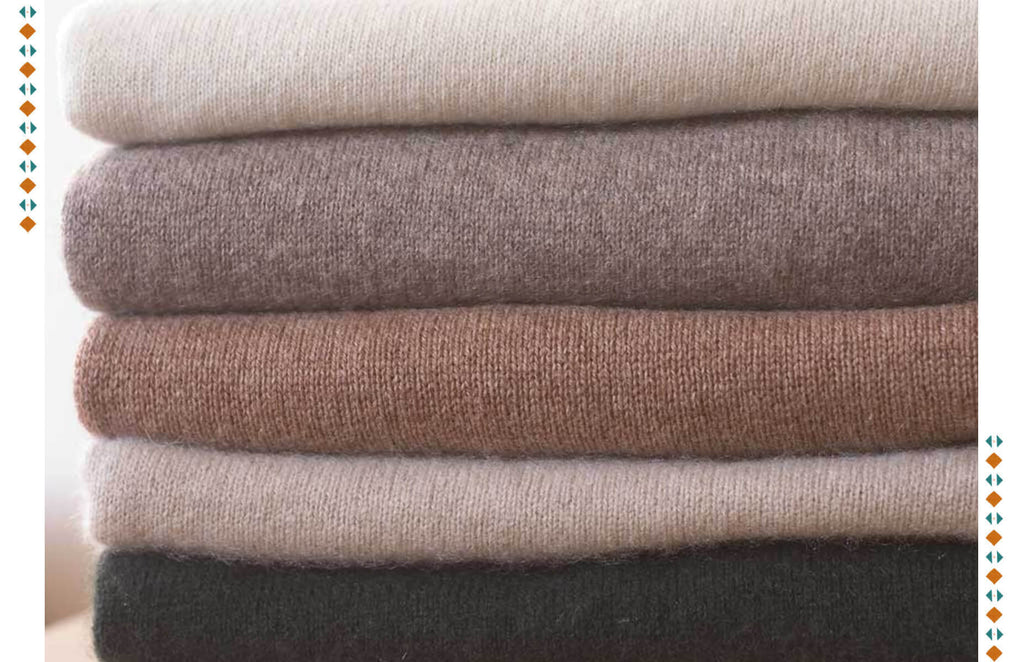What is Cashmere Wool?
- Wool from cashmere goats and pashmina goats are both considered to be cashmere wool.
- Most of the time, it is cut from the goats' underbellies or the area around their necks.
- Kashmir is the traditional spelling of cashmere, and it refers to an area in Northern India that is still responsible for the production of cashmere.
- In comparison to sheep's wool, cashmere is noticeably more lightweight and cozy.
- Due to the fact that cashmere fibers are so tiny and delicate, they are often combined with other kinds of wool, such as merino, in order to give the cashmere an increased level of density.
- This type of wool doesn't keep you warm as well as regular sheep's wool, but it is soft enough to wear close to the skin without causing irritation.

History
- Both in Mongolia and in the Kashmir area, the breeding of cashmere goats extends back to a time before written history.
- There are signs that cashmere has been made for much longer than the third century BC, which is when it was first mentioned. This suggests that it has been made for a much longer time.
- Cashmere wool was first brought into the Middle East via trade with Turkestan. From there, it was sent along old trade routes to the royal courts of Europe and other places.
- French people liked cashmere wool a lot, so enterprising business people went through dangerous trade routes to bring this mythical material back to Europe, where the market was booming.
- By the 19th century, making cashmere wool was a big business in Europe, and selling cashmere wool products brought economic benefits to many parts of the world.
- Traditional goat herders in Central Asia continue to profit from the cashmere trade, and demand for this very soft textile fiber continues to be strong all over the globe.

What Makes it Stand Out
|
Texture |
Cashmere wool is a very fine, and delicate, fabric that feels like silk to the touch. |
|
Shine |
The fabric has a subtle sheen. |
|
Hypoallergic |
It has the properties of being hypoallergenic with being moisture-resistant. |
Applications & Usage
|
Cardigans, pullovers, sweaters, shawls, etc. |
|
|
Chaircovers, bed sheets, couch covers, blankets, etc. |
|
|
Gloves, socks, scarves, etc. |
How to Judge the Authenticity
- The texture of cashmere should never be rough or abrasive to the wearer's touch. If it does, then the cashmere you are touching is of a lower quality or it is a cashmere mix. The higher the quality of the cashmere, the softer the item will be.
- First, the garment or object is gently stretched out, and then the stretch is released. Finally, the item is checked to see whether it returns to its former shape. Cashmere of high quality will return to its natural state, whereas cashmere of a lower grade will either remain stretched out or return to its original state much more slowly.
- It smells like charred feathers, with a pronounced undertone of sulfur being burned. When they cool down, they also produce a little black ball of ash that is quite solid, but after it has cooled down, you can crush it between your fingers.
Care Instructions
- You should hand wash or put your cashmere through a gentle cycle in the washing machine with cold water at home.
- Be careful to clean cashmere using mild soap, and if you want to go very specific, you can even look for detergents that are formulated specifically for cashmere.
- If you are going to wash the item by hand, first soak it in a basin of cold water, and then remove it from the water and squeeze out any surplus liquid.
- Do not wring the item, since doing so might cause it to expand or lose its form.
- After the extra water has been wrung out, put your item out to dry on a level surface. Never hang the item since doing so will cause the fibers to stretch.
- Because cashmere is able to withstand moisture without being damaged, steaming is really the most effective method for removing creases from the fabric.
- If you do not have access to a steamer, you may remove wrinkles from your sweater by laying it out on an ironing board, keeping the iron about an inch above the surface of the sweater, and directing short bursts of steam from the iron onto the garment's wrinkles.
- Alternately, you might lay a thin, moist towel over the sweater and then use the iron to smooth out the creases while applying very mild pressure.

We also happen to be a magnet for suggestions, and would love to catch yours….throw us yours on hello@fabriclore.com





